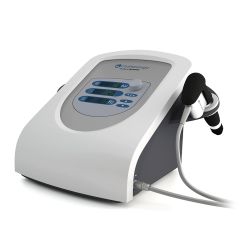Comparison of Radial Extracorporeal Shock Wave Therapy and Traditional Physiotherapy in Rotator Cuff Calcific Tendinitis Treatment
Tomris Duymaz and Dilşad Sindel
Published in: Archives of Rheumatology, 2019 DOI: 10.5606/ArchRheumatol.2019.7081
This study was conducted to determine whether adding radial extracorporeal shockwave therapy (rESWT) to a conventional physiotherapy program would be more effective at improving pain and function in patients with chronic rotator cuff calcific tendinitis (RCCT) than conventional physiotherapy alone.
Eighty patients with RCCT were randomized to one of the following 2 groups:
- Conventional physiotherapy (PT): consisted of ultrasound, transcutaneous electrical nerve stimulation, ice, range of motion (ROM) exercises, and stretching. PT occurred five days a week for four weeks.
- rESWT + PT: consisted of conventional PT plus rESWT once per week for 4 weeks. Each treatment session included 1500 pulses, 150 pulses/min. Treatments started with a low energy density of 0.03 mJ/mm2 and increased to 0.28 mJ/mm2 as tolerated. The supraspinatus, infraspinatus, teres minor, and subscapularis tendons were treated.
Shoulder pain was assessed using the Visual Analog Scale (VAS) pre and post-treatment. After 4 weeks of treatment, all patients had a significant reduction in pain. However, the rESWT group improved significantly more than the PT only group. The rESWT group pain scores decreased by 82% while the PT group pain scores decreased by 66%.
Shoulder function was evaluated pre and post-treatment with ROM measurements and an abbreviated version of the Disabilities of the Arm, Shoulder and Hand questionnaire (QuickDASH). All patients had improved function after treatment, but only the rESWT group had statistically significant changes in all ROM tests and the QuickDASH.
The take-home message from the study is that while conventional PT helped improve pain, ROM, and functional outcome scores for RCCT patients, adding rESWT to conventional PT resulted in even greater improvements in all outcome measures.


